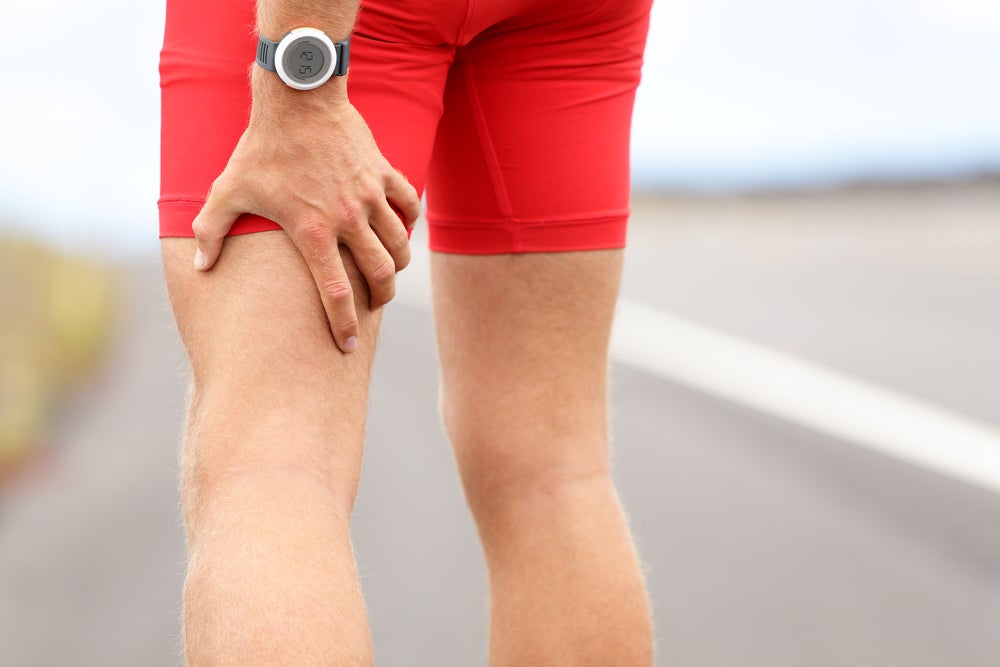Med Tent: Strained (Pulled) Hamstring

Photo: <a href=http://shutterstock.com>Shutterstock.com</a>
Dealing with a pulled hamstring? Dr. Jordan Metzl discusses the symptoms, as well as how to fix it and prevent it in the future.
The symptoms
Tightness or pain, sometimes severe, when you apply pressure to the hamstring or load the muscle group.
What’s going on in there?
When the hamstring is injured, the key to fixing it is to first recognize the injury. A hamstring strain is typically the result of pushing too hard and, most importantly, not paying enough attention to pain cues.
Fix It
• Stop. Trying to push through it will only make it worse.
• Employ dynamic rest. Avoid hamstring-loading activities and do intense upper-body and core workouts to maintain fitness.
• Ice it. As soon as you can after the injury, start applying ice to the muscle for 15 minutes at a time four to six times a day for the first two days.
• Stretch it—gently. After a few days, perform gentle hamstring stretches several times a day. Depending on the severity of the strain, expect a healing time of anywhere from two to eight weeks.
• Work it—gradually. As the pain recedes, ease yourself back into activity, particularly speed and hill work. If you feel pain, don’t push it.
Prevent it
You need to work your glutes, hip flexors, quads and core as well as your hamstrings if you want to prevent a pulled hammie. All these muscles work together and need to be strong, flexible, and balanced. Isolated hamstring curls can work the hamstrings alone, but for better results, stick with multi-muscle exercises.
Dumbbell step-up
Hold a pair of dumbbells at arm’s length at your sides. Stand in front of a bench or step and place your left foot firmly on the step. The step should be high enough that your knee is bent 90 degrees. Press your left heel into the step and push your body up until your left leg is straight and you’re standing on one leg, keeping your right foot elevated. Lower your body back down until your right foot touches the floor. That’s one rep. Do 10–15 reps with your left leg, then do the same number with your right leg.
Walking lunge (dumbbells optional)
Perform a lunge, but instead of pushing your body backward to the starting position, raise up and bring your back foot forward so that you move forward (as though you’re walking) a step with every rep. Alternate the leg you step forward with each time. Complete 10 total steps forward, then switch to backward walking lunges to return to your starting point.
Hip raise
Lie face-up on the floor with your knees bent and your feet flat on the floor. Place your arms out to your sides at 45-degree angles, your palms facing up. Raise your hips so your body forms a straight line from your shoulders to your knees. Squeeze your glutes as you raise your hips. Make sure you’re pushing with your heels. To make it easier, you can position your feet so that your toes rise off the floor. Pause for five seconds in the up position, then lower your body back to the starting position. Do 15–20 reps.
New York City sports medicine specialist Jordan D. Metzl, M.D. is a 29-time marathon runner and 10-time Ironman finisher. His new book, The Athlete’s Book of Home Remedies, has more than 1,000 tips to fix all types of injuries and medical conditions.
RELATED: Preventing Hamstring Injuries
Follow Triathlete on Twitter @Triathletemag for inspiration, new workout ideas, gear reviews from our editors and more.